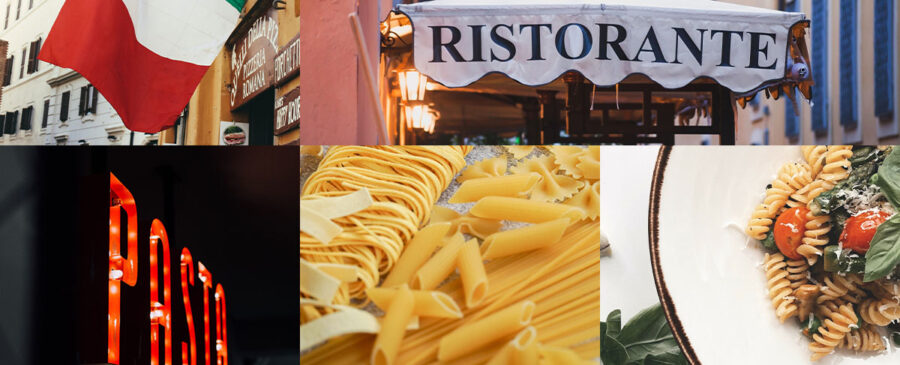Why Pasta Tastes Better in Italy: The Power of Expectation in Marketing

If you have ever traveled to Italy, you already know how good the pasta is, incomparable to anything we’ve got in this country. Even if you order your favorite dish, the same one you always get at the authentic Italian restaurant back home, it just doesn’t compare when made on Italian soil. Somehow, remarkably and despite the nearly identical ingredients, it seems to simply taste better where it was born.
Now, is the quality just that much higher in old Roma, or is something else at play? Could it be the fact that the pasta is also accompanied by the distinct aromas wafting from the kitchen, the blanket of a new language surrounding you on all sides, and the view of the bustling streets around you? You’d think so, but it’s something else.
When in Italy, you expect the food to blow you away. You anticipate this to be the most delicious pasta you have ever tasted. So it is. This overwhelming feeling comes down to expectation. You have a perception about the ‘brand’ that is Italy: that their pasta is superior to all others. Therefore, when eating the local cuisine, you innately believe it tastes better. That is what you have been told your entire life by credible sources. So you believe it. There is no magical mind bending involved. It’s simply how the brain works. It’s the power couple behind every great brand relationship: neuroscience mixed with a good marketing strategy.
Brand Expectation 101
If brand perception is simply the sum of all associations consumers have with a company or product — brand expectation goes much further. Beyond simply having an opinion about a particular brand, expectation invites anticipation and the belief that the product truly will perform better than its competitors. When successful marketing strategies create this profound connection in the minds of consumers — so much so that it actually begins to affect their actual physiology — this is the phenomenon known as Brandcebo, or the placebo effect of brands. Wondering how to make it happen? Let’s talk about it.
-
Create Aspirations
Now that your audience is aware of your brand and might already have formed an opinion, it’s time to create new aspirations in their minds. Not to worry, this won’t require a psychic. It’s the magic of marketing. Start by truly knowing your audience. In order to create aspirations, you need to align with them. Show them what your brand can offer and let them see that they aspire to achieve it. For example, if you are selling toys for babies, show them how they can help your baby learn and grow. Or, if you are an exercise platform, show your audience the fit lifestyle they could lead with your help.
-
Make Intangibles Tangible
Perception is intangible. So do what you can to bring your audience something they can touch, taste, hear, smell, or feel, even if it’s still only cognitive. Think scratch and sniff, but with an added class and sophistication. Make your marketing materials show, not tell. For example, if you are offering a toy that comes built right out of the box, remind your audience of the beaming smile that will appear on their child’s face when they can play right away. Or, if you are selling yoga mats that don’t need to be aired out because of a plasticky smell, get your audience excited about getting their lion’s breath on, on day one of their purchase.
-
Provide a Reason
You can’t expect your audience to expect great things from your brand without a solid reason. So give them one, or five, or ten! Brand perception transforms into expectations with stats and success stories. Work on increasing those excellent reviews and five star ratings. Integrate expert opinions, proof of success, and scientifically backed information into your marketing materials. You can start as simple as some spectacular testimonials, or create a shining star of an infographic to wow your potential customers. With the proof behind your brand, the knowledge that it works and others love it, your audience has a reason to believe that what you have to offer will work for them too.
-
Align Promises and Goals
As you expand your marketing, you are offering promises to customers. Maybe your freshly baked bread will arouse nostalgia in customers that miss their homeland, or are longing to revisit a treasured vacation destination. Or maybe it is mostly unprocessed, fermented, and fiber rich, helping them be a healthier version of themselves. Whatever you promise, it needs to align with your audience’s existing life goals. How is your brand different from competitors and how does that help customers achieve something that only you can truly help them with? Tap into this through your marketing materials. How? Conjure images of France to bring them a piece of what they are missing, or instead, use a graphic of a healthy gut to play up that your product is natural, real, and as good for them as they want it to be.
-
Hype Honestly
Go all out when it comes to hyping your brand. Don’t hold back with all of the amazing benefits your products have to offer. Whenever possible, go viral. Easier said than done, but the point still stands. Let your brand shine with and alongside the product you are offering. But remember, honesty is key. You have to be able to deliver. False promises are glaring and any attempts to mislead your customers with your marketing strategy will certainly backfire. So call attention to your brand’s best assets and do so truthfully. Let your product exceed expectations.
Expectation is just one element of BRANDcebo. This alone is not enough to create the long-lasting, brand romance you want. You also have to deliver on the promises you make. That means, once you have made the jump from brand perception to expectation, you need to enact a sustainable and fulfilling desire within your audience. They have to truly, deeply, want what you are selling, and be willing to keep coming back for more… Buy the book here to find out how to make desire an integral facet of your marketing strategy.
